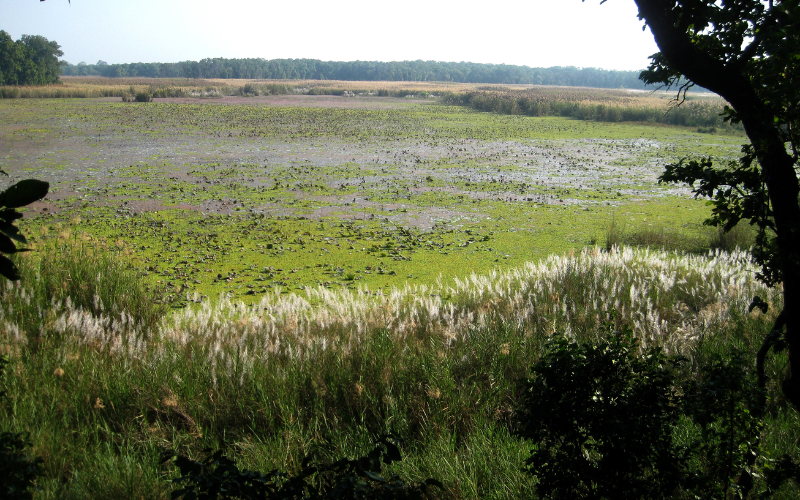Kanchanpur is one of the nine districts of Sudurpashchim Province in the far-western region of Nepal. Known for its cultural diversity, fertile plains, and natural beauty, Kanchanpur plays an important role in the social and economic life of the country’s western frontier.
Geography and Location
Kanchanpur District lies in the Terai lowlands, sharing borders with India to the south and west, Kailali District to the east, and Dadeldhura District to the north. The district headquarters is Bhimdatta Municipality, formerly known as Mahendranagar.
Covering an area of approximately 1,610 square kilometres, Kanchanpur had a population of about 451,248 according to the 2011 Nepal Census. Its landscape is predominantly flat and fertile, with the Chure (Siwalik) hills rising gently in the north and the Mahakali River forming its western boundary.
Climate
The district experiences a sub-tropical monsoon climate, characterised by hot summers, mild winters, and heavy rainfall between June and September. The favourable climate, coupled with fertile soil and river systems, supports extensive agricultural activity throughout the year.
People and Culture
Kanchanpur is home to a rich blend of ethnic groups, including the Tharu, Brahmin, Chhetri, Dalit, Magar, and others. The Tharu community forms one of the largest indigenous groups and retains distinct cultural traditions, dress, and festivals.
Religiously, the population is predominantly Hindu, with communities of Buddhists and Muslims also present. Festivals such as Maghi, Dashain, Tihar, Holi, and Gaura Parva are celebrated with great enthusiasm, reflecting the district’s cultural harmony and diversity.

Tourism and Natural Attractions
Kanchanpur offers a range of natural and cultural attractions that appeal to both domestic and international visitors:
Shuklaphanta National Park – Formerly a wildlife reserve, this protected area is renowned for its vast grasslands and rich biodiversity, including the endangered swamp deer (barasingha), Bengal tigers, and over 400 species of birds.
Dodhara Chandani Suspension Bridge – Spanning the Mahakali River, this pedestrian bridge of about 1,453 metres is one of the longest of its kind in Nepal, connecting the twin villages of Dodhara and Chandani.
Mahakali River – Flowing along the western border, the river provides scenic beauty and opportunities for fishing and local trade.
Bhimdatta Municipality – The administrative and commercial centre of the district, offering modern amenities, vibrant markets, and access to nearby tourist destinations.
Kanchanpur stands as a district of opportunity, culture, and resilience. With its fertile land, diverse population, and growing infrastructure, it serves as a vital gateway to Nepal’s far-western region. Balancing development with environmental conservation will be key to ensuring that Kanchanpur’s natural and cultural heritage continues to thrive for generations to come.
PC: Wikimedia Commons
Also Read